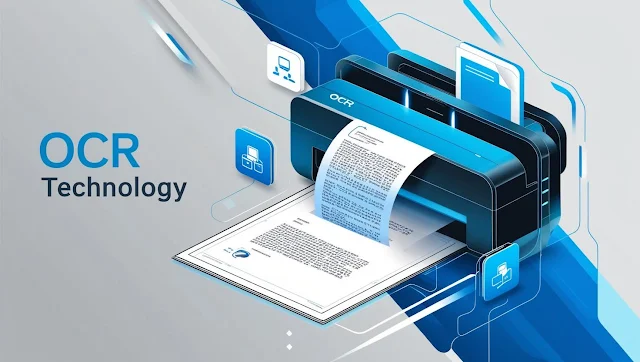Microsoft Office's OCR technology has transformed how we manage, edit, and use scanned documents or images containing text. OCR systems extract text from images or non-editable documents, converting them into editable and searchable formats. The rest of this guide covers the features and uses of these tools, their benefits and drawbacks, and what to expect in regards to how such systems can streamline your workflow.
What is OCR in Microsoft Office?
OCR in Microsoft Office refers to the functionalities of scanning and converting text from images, PDFs, or printed documents into a digital format for editing using tools such as Microsoft OneNote or Microsoft Word. These tools analyze the structure of an image to identify text, formatting, and other elements that make it possible to edit or search the content.
Key Usages of Microsoft Office OCR
1. Document Conversion:
- Convert scanned files, images, or PDFs to editable Word documents.
- Useful for digitizing paper-based records or forms.
2. Data Extraction:
- Extract text from images like screenshots and scanned pages for reusing those.
- Good for researchers and students in summarizing lengthy documents.
3. Archiving and Indexing:
- Let the scanned documents be organized and classified by converting them into searchable formats.
- Helpful in document management systems for quick retrieval.
4. Language Translation:
- Translation of the extracted text is allowed in different languages with the help of integrated translation tools.
Benefits of Using OCR in Microsoft Office
1. Improved Productivity:
- This saves time that would be used to retype text from scanned documents and images manually.
2. Cost-Effective Solution:
- Minimizes reliance on third-party software for OCR. Many Microsoft Office tools come standard with many Office 365 subscriptions.
3. Enhanced Accessibility:
- It changes printed content into accessible text that includes audio through screen readers for the visually impaired.
4. Data Accuracy:
- Most modern OCR tools have minimal errors, hence increasing accuracy in text extraction.
5. Seamless Integration:
- Integrates with other Office applications, including Excel, Word, and OneDrive, for a seamless digital experience.
How to Use Microsoft Office OCR Efficiently
1. Ensure High-Quality Scans:
- Scanning with high resolution will provide better accuracy in text extraction.
2. Use Microsoft OneNote:
- Insert scanned images or PDFs into OneNote and make use of the "Copy Text from Picture" feature to swiftly copy text from them.
3. Leverage Integration:
- Combine the functionality of OCR with other tools, such as Excel to analyze data or Word to edit documents.
4. Proofread Extracted Text:
- One should always proof and edit extracted text for possible inaccuracies in critical documents.
Limitations of Microsoft Office OCR
1. Lack of Advanced Features:
- Compared to independent OCR software such as ABBYY FineReader, Microsoft Office OCR might lack advanced features, including batch processing or handwriting recognition.
2. Accuracy Issues with Complex Documents:
- OCR falters when the document contains a complicated layout, has tables, or is of poor image quality.
3. Dependent on Office Subscription:
- The OCR functionalities in Microsoft Office are often closely related to Office 365 subscriptions, which might not be economically feasible for sporadic users.
4. Language Support:
- While strong, the support for languages may not be as exhaustive as in separate OCR software.
Benefits of Microsoft Office OCR
1. User-Friendly:
- Has no complex technicalities involved; the process is made easy with integrated tools like OneNote.
2. Cloud Storage:
- The scanned files using OCR can be saved on OneDrive, which allows access anywhere.
3. Frequent Updates:
- Microsoft updates its tools quite often, ensuring compatibility with newer file types and increasing their accuracy.
4. Multi-Format Compatibility:
- OCR tools in Microsoft Office support formats such as JPG, PNG, PDF, and TIFF.
Conclusion
Microsoft OCR office tools are thus a facilitator of convenience and economy for both small-scale and large-scale business solutions when trying to digitize and manage textual content efficiently. Although they offer fewer features compared to the advanced packages of dedicated OCR software, integration within Microsoft Office products makes them the ideal tool for daily tasks. This would indeed go a long way in saving productive hours, eliminating errors, and maintaining ease in document management processes.
However, OCR is not 100 percent accurate. If the original item has extraneous markings on the page, unusual text styles, very small fonts, or photo/photos the searchable text OCR generates will contain errors that cannot be corrected automatically.
If you use office 2007 or 2010 version then you may be can't see the OCR application on tools section. By add/remove feature the OCR system can be enabled. After successful configuration you'll get the OCR program in your MS Office tools section.




Enjoyed the article? Let us know what you think by commenting below!